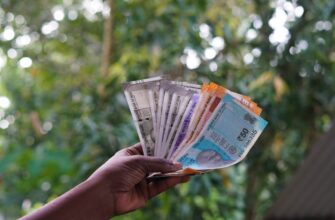## Bitcoin Halving Countdown: Your Essential Guide to the Next Crypto Milestone
The Bitcoin halving countdown isn’t just a timer—it’s a seismic event that reshapes crypto economics. Occurring roughly every four years, this programmed reduction in Bitcoin’s block reward sparks intense speculation, historical price surges, and fundamental shifts in miner behavior. With the next halving approaching, understanding this mechanism becomes critical for investors, miners, and crypto enthusiasts alike. This guide breaks down everything you need to know about the Bitcoin halving countdown and its far-reaching implications.
## What is Bitcoin Halving? The Core Mechanism Explained
Bitcoin halving is a pre-coded event in Bitcoin’s blockchain that slashes the reward miners receive for validating transactions by 50%. Designed by Satoshi Nakamoto, this deflationary feature:
* Occurs every 210,000 blocks (approximately every 4 years)
* Reduces new Bitcoin supply entering circulation
* Enforces Bitcoin’s 21-million-coin cap
* Controls inflation by mimicking scarce commodity extraction
This built-in scarcity is why Bitcoin is often called “digital gold”—halvings progressively tighten supply until all coins are mined around 2140.
## Why the Halving Countdown Matters: Beyond the Hype
Tracking the Bitcoin halving countdown isn’t mere curiosity; it signals critical market dynamics:
* **Supply Shock**: Fewer new coins mean reduced selling pressure from miners needing to cover operational costs.
* **Historical Price Catalysts**: Past halvings (2012, 2016, 2020) preceded massive bull runs, though with increasing lag time post-event.
* **Miner Economics Shift**: Reduced rewards force less efficient miners offline, potentially increasing network centralization temporarily.
* **Sentiment Gauge**: Countdowns amplify media coverage, driving retail interest and volatility.
## Key Dates & Historical Halving Impact
| Event | Block Height | Date | Reward Before | Reward After | Price 1 Year Later |
|—————-|————–|————|—————|————–|———————|
| Genesis Block | 0 | Jan 2009 | 50 BTC | – | – |
| First Halving | 210,000 | Nov 2012 | 50 BTC | 25 BTC | ~$800 (from $12) |
| Second Halving | 420,000 | July 2016 | 25 BTC | 12.5 BTC | ~$2,500 (from $650) |
| Third Halving | 630,000 | May 2020 | 12.5 BTC | 6.25 BTC | ~$55,000 (from $8,900) |
| **Next Halving** | **840,000** | **~April 2024** | **6.25 BTC** | **3.125 BTC** | TBD |
*Note: Dates are estimates based on average block time; price data reflects approximate growth.*
## Tracking the Countdown: Real-Time Tools and Methods
Monitor the next Bitcoin halving countdown using these resources:
1. **Block Explorers**: Sites like Blockchain.com or Blockchair display current block height and projected halving dates.
2. **Dedicated Countdown Sites**: Platforms like BitcoinHalving.com or CoinGecko offer real-time trackers with visual progress bars.
3. **Calculation Method**: Subtract the current block height from 840,000. Multiply remaining blocks by 10 minutes (average block time) for an estimated countdown.
## Post-Halving Expectations: What Could Happen Next?
While history doesn’t guarantee future results, potential outcomes include:
* **Short-Term Volatility**: Price often dips initially as miners sell reserves, followed by upward momentum as supply tightens.
* **Hash Rate Fluctuations**: Less efficient miners exit, causing temporary drops in network security before stabilization.
* **Altcoin Ripple Effects**: Major halvings often boost interest in crypto broadly, lifting other assets.
* **Long-Term Value Proposition**: Scarcity enhancement reinforces Bitcoin’s store-of-value narrative.
## Bitcoin Halving FAQ: Your Top Questions Answered
**Q: When is the next Bitcoin halving?**
A: Expected around April 2024 at block 840,000. Exact dates vary slightly due to fluctuating block times.
**Q: How does halving affect Bitcoin’s price?**
A: Historically, prices surged 12-18 months post-halving due to supply constraints and demand spikes. However, external factors like regulations or macroeconomics can override this pattern.
**Q: Will Bitcoin mining become unprofitable after halving?**
A: For miners with high operational costs, yes. Efficiency-focused operations typically survive, benefiting from reduced competition and potential price appreciation.
**Q: How many halvings are left?**
A: Halvings continue until block rewards reach nearly zero (~2140). Only 64 halvings total are possible under Bitcoin’s code.
**Q: Does halving increase transaction fees?**
A: Not directly. Fees depend on network congestion. However, if miner revenue drops significantly, users may pay higher fees to prioritize transactions.
## Final Thoughts: Why This Countdown Demands Attention
The Bitcoin halving countdown represents crypto’s most predictable economic earthquake. While short-term turbulence is likely, the event underscores Bitcoin’s engineered scarcity—a feature no government currency can replicate. Whether you’re a trader, miner, or HODLer, understanding this rhythm helps navigate crypto’s volatile landscape. Bookmark a halving tracker, study historical patterns, and remember: in Bitcoin’s deflationary design, time itself is the ultimate ally.








